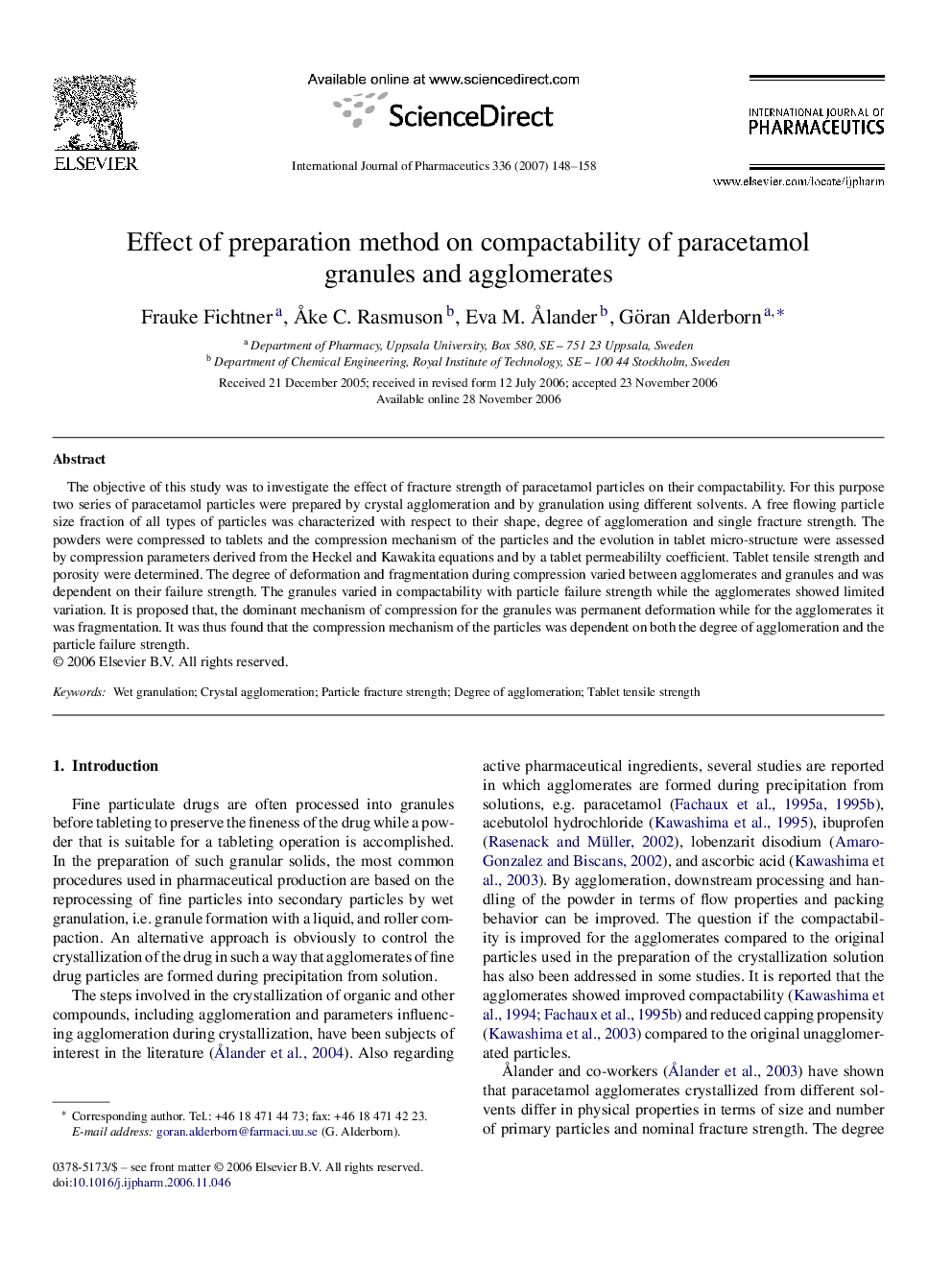| Article ID | Journal | Published Year | Pages | File Type |
|---|---|---|---|---|
| 2506236 | International Journal of Pharmaceutics | 2007 | 11 Pages |
The objective of this study was to investigate the effect of fracture strength of paracetamol particles on their compactability. For this purpose two series of paracetamol particles were prepared by crystal agglomeration and by granulation using different solvents. A free flowing particle size fraction of all types of particles was characterized with respect to their shape, degree of agglomeration and single fracture strength. The powders were compressed to tablets and the compression mechanism of the particles and the evolution in tablet micro-structure were assessed by compression parameters derived from the Heckel and Kawakita equations and by a tablet permeabililty coefficient. Tablet tensile strength and porosity were determined. The degree of deformation and fragmentation during compression varied between agglomerates and granules and was dependent on their failure strength. The granules varied in compactability with particle failure strength while the agglomerates showed limited variation. It is proposed that, the dominant mechanism of compression for the granules was permanent deformation while for the agglomerates it was fragmentation. It was thus found that the compression mechanism of the particles was dependent on both the degree of agglomeration and the particle failure strength.
